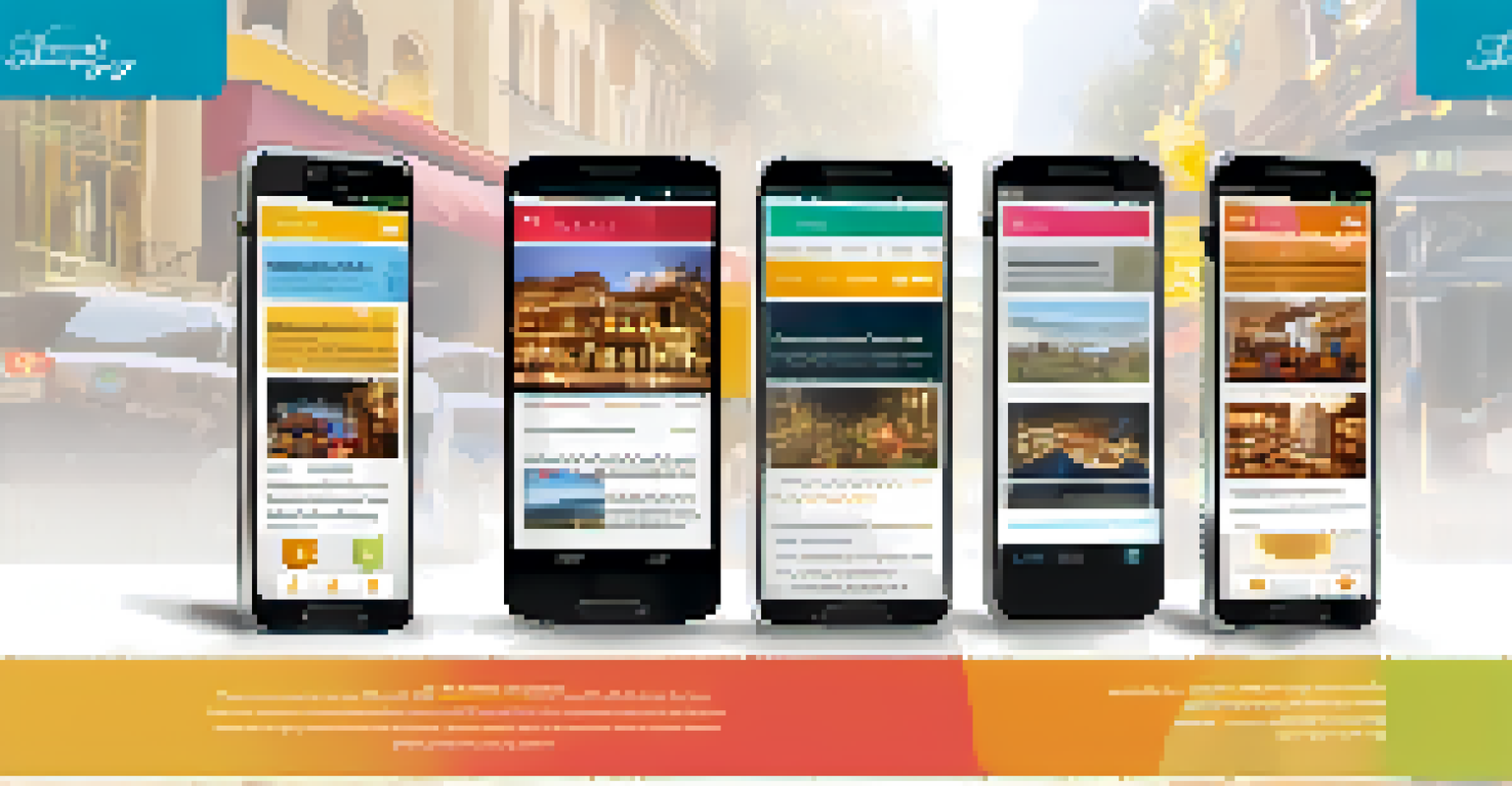Optimizing Mobile Websites for Better Shopping Experiences

Understanding the Importance of Mobile Optimization
In today's digital landscape, a significant portion of shopping happens on mobile devices. This shift underscores the necessity of optimizing mobile websites for a seamless user experience. When websites cater to mobile users, they not only boost customer satisfaction but also enhance conversion rates.
In the world of mobile commerce, optimizing for user experience is not an option; it's a necessity.
Consider this: if a user finds a website difficult to navigate on their phone, they are likely to abandon their cart and seek alternatives. A well-optimized mobile site can make all the difference in retaining potential customers. By focusing on mobile optimization, businesses can not only compete but thrive in the online marketplace.
Moreover, search engines like Google prioritize mobile-friendly sites in their rankings. This means that if your mobile site isn’t optimized, you may miss out on valuable traffic. Embracing mobile optimization is not just a trend; it's a vital strategy for success.
Responsive Design: A Must-Have for Mobile Sites
Responsive design ensures that your website adapts to various screen sizes and orientations. This means your site will look great whether accessed on a smartphone, tablet, or desktop. By using fluid grids, flexible images, and CSS media queries, you can create a seamless experience for all users.

Imagine trying to shop on a site where text and images are cut off or too small to read. Frustrating, right? A responsive design eliminates these headaches, allowing users to navigate products and make purchases effortlessly. When your website is easy to use, customers are more likely to complete their transactions.
Mobile Optimization Boosts Sales
Optimizing mobile websites enhances user experience, leading to increased customer satisfaction and higher conversion rates.
Additionally, responsive design can save you time and resources. Instead of maintaining separate sites for mobile and desktop, you only need to update one version. This efficiency can enhance your overall digital strategy.
Speed Matters: Optimizing Load Times
In the world of online shopping, speed is crucial. Research shows that even a one-second delay in load time can lead to a significant drop in conversions. Mobile users, in particular, expect quick access to information and products, so optimizing load times is non-negotiable.
The best websites are those that are simple, intuitive, and designed with the mobile user in mind.
To improve your site's speed, consider compressing images, minimizing HTTP requests, and leveraging browser caching. These techniques can help reduce load times, providing a smoother shopping experience for your customers. A fast site not only retains users but also encourages them to explore more products.
Using tools like Google PageSpeed Insights can help you identify areas for improvement. Monitoring load times regularly ensures your site remains efficient and user-friendly, keeping customers happy and engaged.
Simplifying Navigation for Easier Shopping
Effective navigation is the backbone of a successful mobile shopping experience. When users can easily find what they’re looking for, they’re more likely to make a purchase. Streamlining navigation involves using clear menus, search functions, and intuitive layouts.
Think about how you browse your favorite shopping apps. You want to find items quickly without sifting through endless menus. Incorporating features like sticky headers or a prominent search bar can enhance usability and reduce frustration. The easier it is to navigate, the more likely users will explore your offerings.
Responsive Design is Essential
A responsive design adapts to various devices, making navigation easier and improving the overall shopping experience.
Additionally, consider implementing filters and sorting options to help users narrow down their choices. This empowers shoppers to find exactly what they want without feeling overwhelmed. Simplified navigation can lead to increased sales and happier customers.
Mobile-Friendly Checkout: Streamlining the Process
A complicated checkout process can be a significant barrier to completing a purchase. Mobile users expect a fast and straightforward checkout experience, so simplifying this process is essential. Eliminating unnecessary fields and providing guest checkout options can significantly reduce cart abandonment rates.
Imagine a user navigating through multiple pages to complete their purchase. It’s tedious and can lead to frustration. By optimizing the checkout flow, you can make it as smooth as possible, encouraging users to finalize their orders. A seamless checkout experience can turn a casual visitor into a loyal customer.
Additionally, offering diverse payment options, such as mobile wallets and one-click payments, can enhance convenience. The more options you provide, the more likely users will complete their transactions on the spot.
Incorporating Visuals for an Engaging Experience
Visual content plays a critical role in mobile shopping experiences. High-quality images, videos, and product descriptions can captivate users and influence their buying decisions. Since mobile screens are smaller, using engaging visuals can make products more appealing and relatable.
Consider how you feel when browsing a site with vibrant images versus one that’s text-heavy. Engaging visuals can enhance product understanding and create a more immersive shopping experience. Using features like 360-degree views or video demos can further draw users in and showcase your products effectively.
Streamlined Checkout Reduces Abandonment
Simplifying the checkout process can significantly lower cart abandonment rates by providing a faster, more efficient experience.
Moreover, keep in mind that the right visuals can also improve user retention. When customers can visualize products clearly, they’re more likely to remember and return to your site. Prioritizing visuals creates a memorable and engaging shopping journey.
Testing and Analytics: Measuring Your Success
After implementing optimizations, it's crucial to test and measure their impacts. A/B testing different elements like layout, colors, and call-to-action buttons can provide insights into what resonates best with users. This data-driven approach can guide future improvements and ensure your site meets customer expectations.
Analytics tools can help you track key metrics such as conversion rates, bounce rates, and user behavior. By understanding how visitors interact with your mobile site, you can identify areas for further enhancement. Regularly reviewing this data can keep your site in peak condition and aligned with user preferences.

Ultimately, optimization is an ongoing process. As technology and user behavior evolve, staying updated on trends and analytics will help you maintain a competitive edge. Embracing a culture of continuous improvement will significantly benefit your mobile shopping experience.